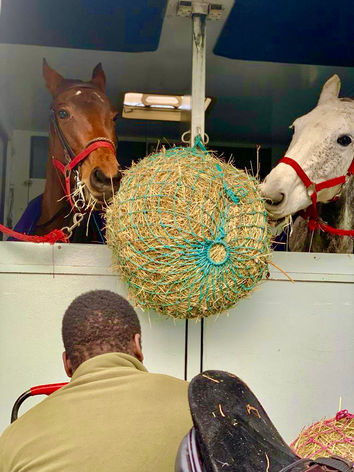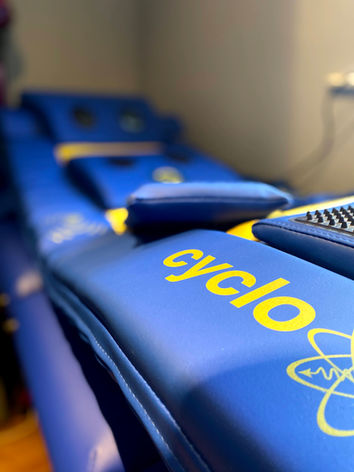
Dr. Jacqueline Halliday-Bell
Consultant Occupational Physician
General Practitioner Certified Hippotherapist
MB ChB, BSc FFOM Cert Av Med. MD
GMC 3356429

Specialising in Occupational Medicine
Hippotherapy and Equine Assisted Psychotherapy
As various different animals have been used to assist during therapy with willing clients, horses have found to have a beneficial affects on patients, helping with a successful outcome. Originating in Germany and standardised by a team of Canadian and American therapists in the late 1980’s, the use of horses has become recognized as an extremely effective method of therapy.
Equine Associated psychotherapy (EAP):
EAP is a therapeutic process in which the horse is used as a tool for growth and recovery. Experience this form of psychotherapy to aid the treatment of psychological and behavioural issues including stress, anxiety, depression, trauma and addictions.
As a relatively new treatment for mental well-being, EAP is not widely available in the UK, but has proven to be successful internationally in aiding the treatment of the following:
-Anger and behavioural problems- horses are able to pick up human emotions and as they dislike anger, the patient is encouraged to act differently in order to gain a relationship with the horse.
-Anxiety and low-self confidence - overcoming the size and power of a horse can help the patient to overcome their anxiety and also build confidence. Building a relationship with a horse can also decrease anxiety levels and increase self-confidence.
-Autism- as EAP requires non-verbal therapy between the client and the horse, those with autism are able to benefit from spending time around horses
-Trauma- for those who have experienced trauma, the caring and non-judgmental nature of horses may be extremely beneficial, this would especially be true for those who have a fear of talking to others about their experiences, but still want to seek out a form of therapy.

Why horses?
As prey animals who live in herds, horses desire company and are willing to be led by others they trust. They are able to build bonds with those they trust and who also trust them. Building strong relationships with the horse is a very useful part of hippotherapy and EAP for the patient. This characteristic of horses also allows them to be easily trained by the therapist and enables them to be reliable during therapy sessions.
Horses also have a unique ability to sense the emotions of other nearby creatures. This natural instinct is vital to their survival in the wild and they are able to mirror and communicate these emotions to the rest of the heard. EAP provides the opportunity for hoses to read the emotions of patients and effectively communicate them to the therapist.
The size and power commanded by these animals can be initially intimidating and present an immediate challenge for some patients. Overcoming this fear is a large part of the therapeutic process. For those struggling with this fear, getting close to horses and learning of their calm and gentle nature can help to boost the patient's self-esteem and self-confidence, a vital element of the therapy.
Aquatherapy and Hydrotherapy
Aquatic therapy that involves moving and exercising in water; effectively it is pool based physiotherapy. Aquatic therapy pools differ from ordinary pools - mainly due to the temperature and its effectiveness relates to the movement in the water.
Doctors can prescribe a course of it as part of a treatment program. Aquatherapy sessions are also used by athletes to improve and maintain their general health, and fitness; it is part of a healthy whole-body routine.
The benefit gained from aquatic therapy is for those who are unable to perform these activities on dry land. The benefits of hydrotherapy also extend to wellbeing.
What is hydrotherapy good for?
Being immersed, buoyant or massaged in water can relieve
our bodies in a variety of different ways, and hydrotherapy
can help with many physical and emotional complaints, including:
-
back pain
-
pain relief
-
anxiety, stress and high blood pressure
-
poor muscle and skin tone
-
poor circulation
-
muscle pain, soreness and inflammation
-
headaches
-
hip or other lower limb and upper limb joint replacements
(before and after the operations)
-
muscle or ligament injuries; broken limbs
-
spinal cord injury
-
neurological conditions such as strokes or brain injuries
-
rheumatoid arthritis, cerebral palsy, ankylosing spondylitis.
Before your appointment
Aquatherapy is often prescribed by a GP or therapist as part of a
course of treatment. it may not be suitable if you are, or think you
might be, pregnant as some forms of hydrotherapy may not be
suitable for you. A big meal or alcohol is not a good idea before you
go into any pool.
What to expect from hydrotherapy
If you are having structured hydrotherapy treatment, your GP or physiotherapist will probably give you an idea of what you'll be doing, and this will depend on what injury or condition you have. If you have a long-term, or severe problem - spinal injuries, for example, or stroke - you will probably have one-on-one supervision and assistance from a therapist. Otherwise, you will have floating support (literally!) from a professional who will guide you through given exercises. You'll be expected to wear a swimming costume.
After your appointment
You may well tired or invigorated after treatment. Leave yourself some time to recover and stay hydrated.

Cyclodial Oscillation Massage Therapy
The Cyclo-ssage Massage Therapy System contains nine massage units. Each produce a three-dimensional massage action known as Cycloidal Oscillation. Non-percussive and multi directional in effect, this soothing action penetrates deep into the muscle tissue with no adverse side effects.
Producing increased muscle activity and dramatically improved localised blood circulation; Cycloidal massage will alleviate the secondary symptoms of many medical conditions and will assist the body to generally work more efficiently.
Cycloidal massage therapy is often the preferred choice of medical practitioners and professionals rather than a percussive type of massage due to its non-aggressive action but also because of its effectiveness in providing on going pain relief medication free.
Infared Heat Therapy
The Massage Therapy System has two separate infrared heat Zones that contain a total of six infrared heat lenses. Each infrared zone can be simply controlled to target the correct level of infrared heat to relieve the secondary symptoms of your condition in a particular area.
Far infrared is a safe and soothing heat source, which penetrates deep into the soft tissue, dilating blood vessels, relaxing tired and aching muscles.
The bodies’ natural healing process is accelerated and the immune system is also encouraged to work more efficiently resulting in improved health and well-being.





















